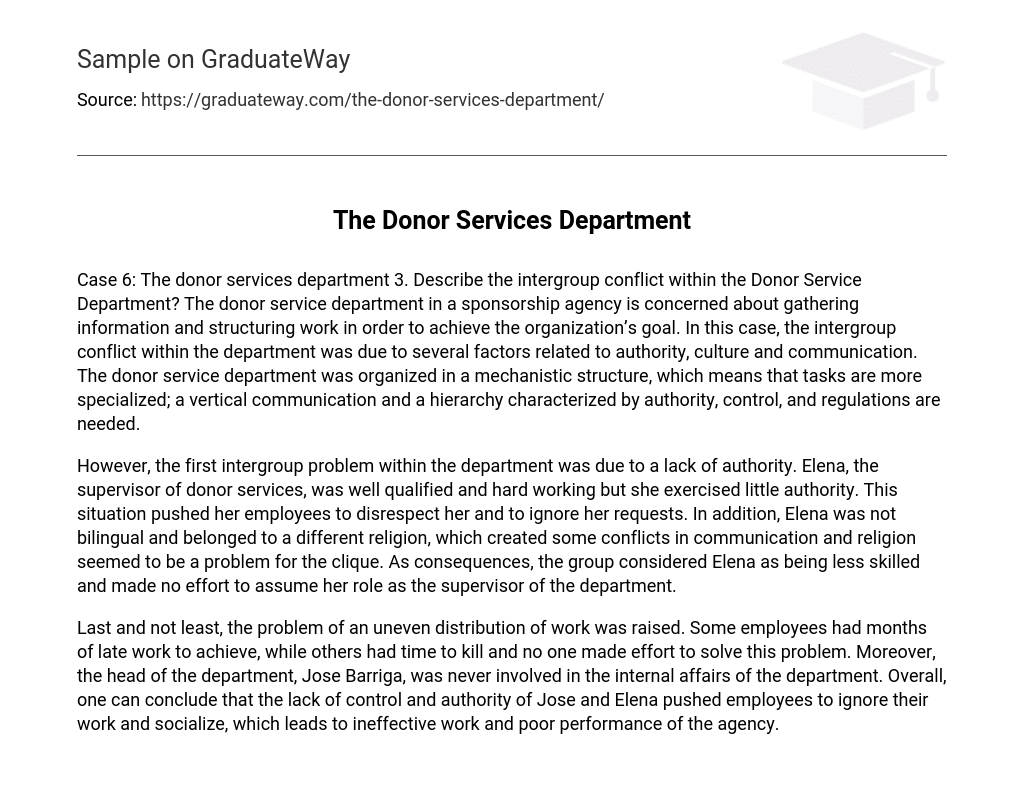Case 6: The donor services department 3. Describe the intergroup conflict within the Donor Service Department? The donor service department in a sponsorship agency is concerned about gathering information and structuring work in order to achieve the organization’s goal. In this case, the intergroup conflict within the department was due to several factors related to authority, culture and communication. The donor service department was organized in a mechanistic structure, which means that tasks are more specialized; a vertical communication and a hierarchy characterized by authority, control, and regulations are needed.
However, the first intergroup problem within the department was due to a lack of authority. Elena, the supervisor of donor services, was well qualified and hard working but she exercised little authority. This situation pushed her employees to disrespect her and to ignore her requests. In addition, Elena was not bilingual and belonged to a different religion, which created some conflicts in communication and religion seemed to be a problem for the clique. As consequences, the group considered Elena as being less skilled and made no effort to assume her role as the supervisor of the department.
Last and not least, the problem of an uneven distribution of work was raised. Some employees had months of late work to achieve, while others had time to kill and no one made effort to solve this problem. Moreover, the head of the department, Jose Barriga, was never involved in the internal affairs of the department. Overall, one can conclude that the lack of control and authority of Jose and Elena pushed employees to ignore their work and socialize, which leads to ineffective work and poor performance of the agency.





